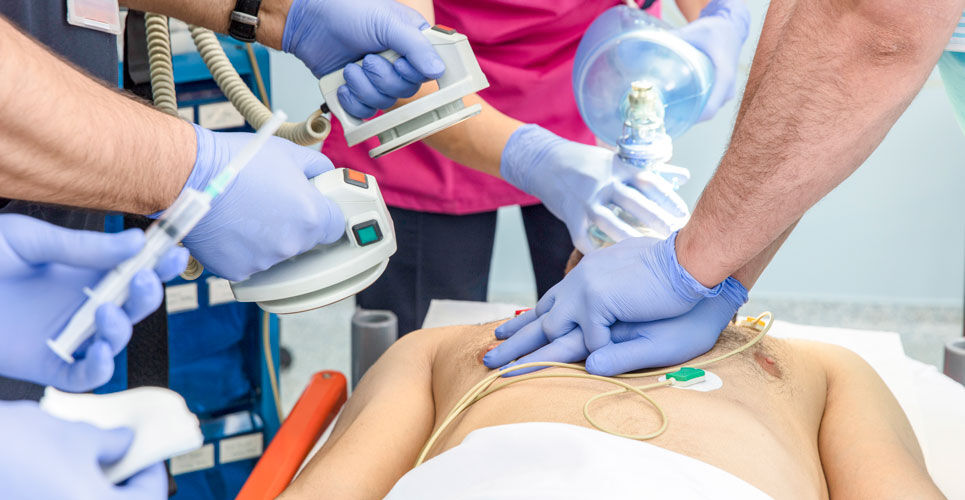Hypothermic temperature control for unconscious patients following an in-hospital cardiac arrest may not provide a mortality benefit, according to a new study.
The value of hypothermic temperature control for unconscious patients following an in-hospital cardiac arrest remains uncertain.
Guidance jointly produced by the European Resuscitation Council and the European Society of Intensive Care Medicine, recommends that in comatose patients after cardiac arrest, continuous monitoring of core temperature is undertaken for preventing fever.
However, the guideline also adds that there was insufficient evidence to recommend for or against temperature control at 32-36 °C or early cooling after cardiac arrest, but a recognition of the limited evidence concerning the potential benefit of temperature control after in-hospital cardiac arrest.
Whether hypothermic temperature control in unconscious patients following an out-of-hospital cardiac arrest is also equivocal, with some data supportive of such control for improving outcomes. Whereas other data using a similar cohort, reveals that hypothermia at a targeted temperature of 33°C did not confer a benefit as compared with a targeted temperature of 36°C.
For the present study, German researchers undertook a randomised controlled trial to examine the effect of hypothermic temperature control following an in-hospital cardiac arrest (IHCA) on mortality and functional outcome compared with normothermia.
They recruited patients with a Glasgow Coma Scale Score of less than 8 (i.e. unconscious) for longer than 45 minutes after their IHCA. Individuals were eligible irrespective of the initial rhythm or aetiology of the cardiac arrest and randomised 1:1 to hypothermic temperature control with a target range of 32° to 34°C and which was maintained for 24 hours followed by slow re-warming to achieve a target of 37.5°C.
In those assigned to normothermia there was no specific range although it was recommended to avoid fever (i.e. a temperature > 37.5°C). All of the patients were followed until 180 days after randomisation and the primary outcome was all-cause mortality after 180 days.
Secondary outcomes included in-hospital mortality and favourable functional outcome after 180 days based on the Cerebral Performance Categories (CPC) scale.
Hypothermia temperature control and all-cause mortality
Overall, 242 patients with a mean age of 72.6 years (64% male) were included with 123 randomised to hypothermic temperature control. After 48 hours the average temperature was 34.5° for the intervention group.
By day 180, the mortality rate was 72.5% in the hypothermic group and 71.2% in the normothermic group and this difference was not significant (relative risk, RR = 1.03, 95% CI 0.79 – 1.40, p = 0.82). In-hospital mortality was also not significantly different (RR = 1.11, 95% CI 0.86 – 1.46, p = 0.44).
In addition, after 180 days, a CPC score of 1 or 2 (normal (1) to moderate disability (2)) was achieved for a similar number of patients in the two groups (RR = 1.04, 95% CI 0.78 – 1.44, p = 0.82). In fact, the trial was terminated prematurely because of futility.
The authors concluded that among comatose patients successfully resuscitated from an IHCA, the use of hypothermic temperature control compared to normothermia, did not improve either survival or functional outcome.
Citation
Wolfrum S et al. Temperature Control After In-Hospital Cardiac Arrest: A Randomized Clinical Trial Circulation 2022.

